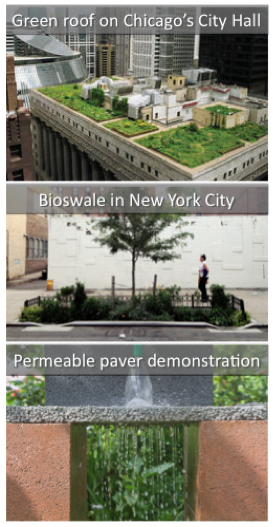New White Paper – Planning for Enhanced Climate Risks: A Perspective from the Military
By Dean W. Korsak
Severe climate trends present large organizations with increased risks to infrastructure and operations. Such risks are of increasing concern to certain U.S. government and military entities. National defense operations continue throughout all phases of severe climate events and are already exposed to harsh climate environments due to the need for strategic defense infrastructure. In addition to severe events, increased severity in climate conditions such as heat, cold, and moisture present unique global operational risks. Planning for enhanced climate risks along with other threats is a new reality for the foreseeable future.
In response to increased climate risks, federal entities are beginning to incorporate these concerns into established risk assessments. The legal requirements to plan for and mitigate exposure to risks are already established. Concerns arise in the process of identifying local vulnerabilities from global climate trends. U.S. military planning in particular has demonstrated it is possible to identify, plan for, and mitigate complex threats like operating through a nuclear attack. Severe climate conditions present a more probable threat than a nuclear attack.
Maintaining a defensive posture against climate risks is only part of the concern. U.S. military assets operate globally to provide the U.S. Government with sovereign options. Climate risks will present crises which lead to humanitarian responses. Combatant commands around the globe are planning for contingencies due to enhanced climate risks. Operational concerns extend beyond maintaining humanitarian response capabilities. For example, expanding operations in the Arctic region is a task that did not previously exist. Understanding climate trends and local vulnerabilities is a new competency military organizations will need to maintain.
Planning for climate risks must be accomplished like planning for other operational threats. From terrorist attacks to active shooter incidents, past events highlight vulnerabilities and gaps that can be filled to prevent future adverse events or reduce the damage they cause. The same is true for climate risks. Past severe climate conditions provide a basis for planning. However, current planning does not adequately identify the appropriate level of risk. For example, current practices focus on planning for a 500 year flood recurrence interval where in reality what we have been considering to be 1,000 year flood events are occurring. There is a need to model for more severe weather events and climate conditions, especially for those who respond to such events.
Calculating climate risks is challenging but feasible. The U.S. National Climate Assessment, along with many other free planning tools, provide the opportunity to understand emerging regional risks. Assessments should continue to project future trends based on past events so that risks are identified and prioritized with other concerns. One of the greatest climate risk planning tools is unity of effort. Numerous risk assessments exist but are not centrally located in a publically available database. Many assessments exist in the form of environmental assessments and environmental impact statements for local projects. Building on previously gathered information will provide cost-effective planning and mitigation options. Leveraging technology will speed a unified effort.
While all human activity comes with risk, understanding vulnerabilities and planning for adverse conditions will save lives, reduce suffering, and protect property. Enhanced climate risks present a formidable vulnerability that can be prevented and mitigated through current risk management processes, resulting in less vulnerable infrastructure and more sustainable operations.
To explore these issues in detail and to discuss the relevant legal authorities, the Sabin Center for Climate Change Law has posted this working paper, “Planning for Enhanced Climate Risks: A Perspective From the Military” by Dean W. Korsak, an active duty officer in the United States Air Force, Judge Advocate General’s Corps and an LL.M. candidate at Columbia Law School.



